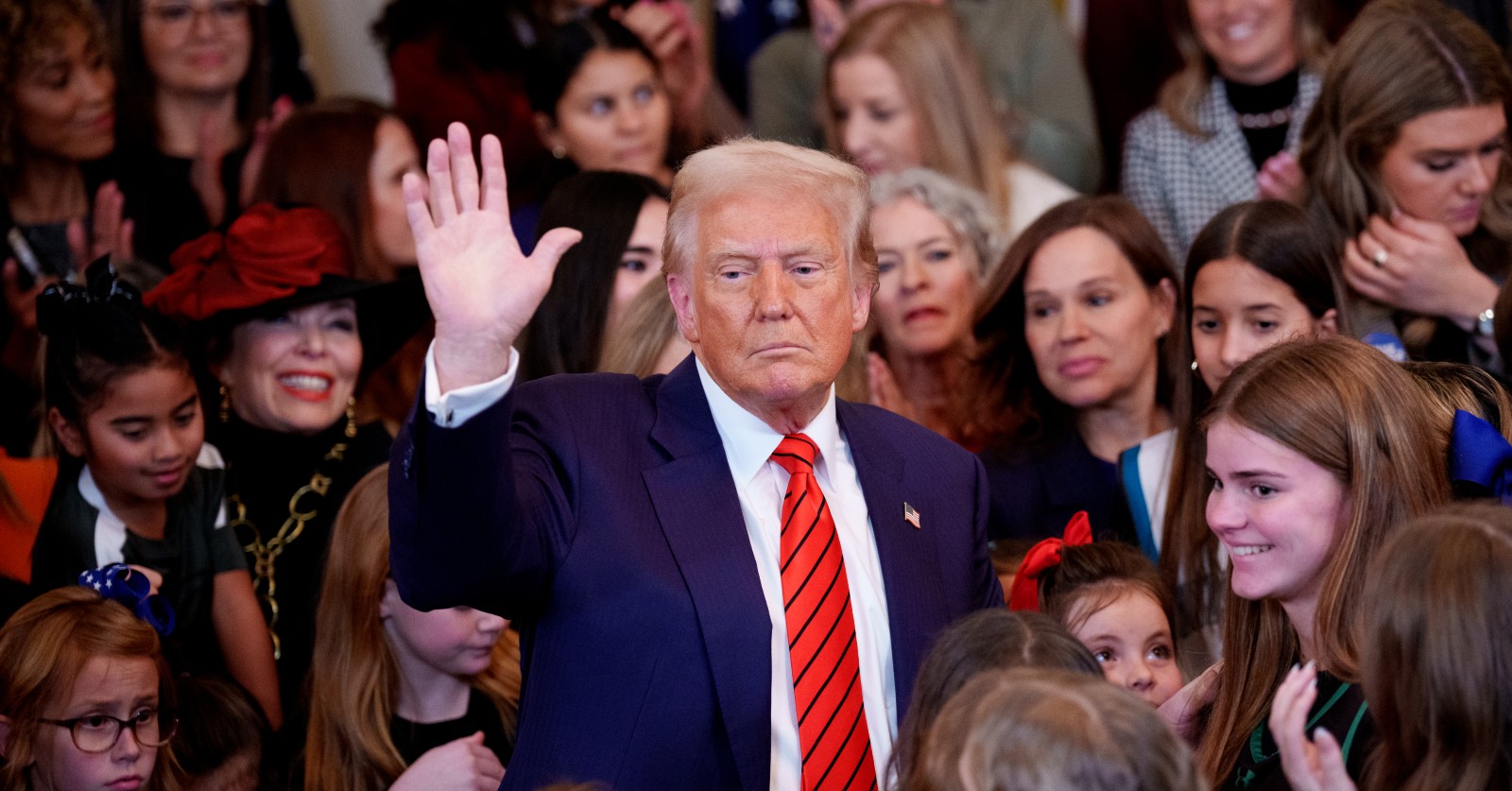President Donald Trump has once again captured headlines with his latest executive order—a sweeping directive aimed at ensuring that taxpayer dollars are not used to “incentivize” the arrival of illegal immigrants. Signed late Wednesday, the order stipulates that federal funds must be reserved for American citizens, and it mandates a comprehensive review of federal and state programs to ensure that public resources are not diverted to initiatives that may encourage illegal immigration.
A Bold Policy Shift
The executive order directs government agencies to restrict any funding allocations that could be interpreted as promoting or facilitating illegal immigration. In a press conference, Trump’s administration emphasized that protecting American citizens—especially vulnerable groups such as people with disabilities and veterans—remains the top priority. According to the text of the order, the federal government is to ensure that programs which “incentivize” illegal immigration are curtailed, thereby redirecting essential resources to support those who are legally entitled to federal benefits.
Trump’s statement underscored a broader political objective: to reassert the principle that taxpayer dollars should benefit American citizens rather than individuals who enter the country illegally. “My Administration will uphold the rule of law, defend against the waste of hard-earned taxpayer resources, and protect benefits for American citizens in need,” the order declares. A White House fact sheet, obtained by Fox News, elaborates on this point by outlining the administration’s commitment to safeguarding federal public benefits and ensuring that they are reserved for those who qualify under the law.
The Cost of Illegal Immigration
This new directive comes amid heightened concerns over the economic impact of illegal immigration. Over the past three years, it is estimated that illegal immigration has cost taxpayers approximately $451 billion, a figure attributed to increased spending on housing, feeding, and providing other public benefits to undocumented immigrants and their dependents. Some experts have speculated that there could be as many as 11 million illegal immigrants residing in the United States today.
Supporters of the executive order point to estimates from the Federation for American Immigration Reform, which suggest that the new policy could save taxpayers at least $182 billion annually. These savings would be achieved by reducing the costs associated with federal, state, and local expenditures on services provided to an estimated 20 million illegal immigrants and their children. Specifically, about $66.5 billion of these expenses are funded by the federal government, with the remainder coming from state and local sources. Advocates argue that redirecting these funds would enable critical public resources to be invested in programs that more directly benefit American families and communities.
Closing a Legal Loophole
One of the central issues addressed by the executive order is the so-called “Green Light Law” that many states, including New York, have adopted. Enacted in 2019, the law allows all residents, regardless of citizenship or lawful status, to apply for a standard, non-commercial driver license or learner permit. Critics argue that this policy inadvertently serves as an incentive for illegal immigration, as it offers undocumented immigrants a pathway to obtain state-issued identification and drive legally.
President Trump’s administration contends that such policies not only undermine the rule of law but also divert essential resources away from American citizens. By targeting programs that provide benefits to illegal immigrants, the new order seeks to eliminate what the administration views as a disincentive for lawful immigration and a misuse of public funds.
Impact on Sanctuary Policies
The executive order also takes aim at local “sanctuary” policies, which have long been a source of contention between federal authorities and state or municipal governments. While some urban centers and blue-state cities have adopted measures to limit cooperation with federal immigration enforcement, other jurisdictions have embraced these policies as a means of protecting vulnerable immigrant communities. However, President Trump’s directive makes it clear that such measures, which he argues compromise the rule of law, will no longer be tolerated if they result in the misallocation of taxpayer resources.
The White House fact sheet criticizes former President Joe Biden’s approach to immigration, alleging that his administration enabled illegal immigration by funneling billions of dollars to groups that, according to the administration, facilitated mass migration and provided legal services to challenge deportation orders. “President Trump has delivered on his promise to secure the border and prioritize the needs of American citizens, taking immediate action to put an end to the previous Administration’s border crisis,” the fact sheet states.
Political and Legal Reactions
The new executive order has sparked a firestorm of debate among policymakers, legal experts, and the public. Supporters of the measure argue that it is a necessary step to curb the runaway costs associated with illegal immigration and to ensure that federal benefits are reserved for those who are legally entitled to them. They maintain that such policies will help secure the nation’s borders, protect American jobs, and restore public trust in government institutions.
Conversely, critics warn that the hardline approach outlined in the order may lead to unintended consequences. There is concern that curtailing funding for programs that benefit undocumented immigrants could result in adverse effects on public safety and community well-being, particularly in areas with significant immigrant populations. Legal scholars also caution that the broad language of the order might spark a series of legal challenges, as states and advocacy groups argue that it infringes upon state autonomy and the ability to design programs tailored to their unique needs.
Political observers note that the executive order is part of a broader strategy by the Trump administration to reassert federal authority over immigration policy—a move that could have far-reaching implications. By positioning taxpayer dollars as a critical battleground in the immigration debate, the administration is attempting to reshape public discourse and force a reconsideration of longstanding policies that, in their view, have prioritized illegal immigration over the needs of American citizens.
The Broader Implications for Immigration Policy
The issuance of this executive order is likely to influence future immigration policy debates at both the state and federal levels. Should the legal challenges mount and the order ultimately be upheld, it could lead to a significant reallocation of public resources, with funds currently used to support undocumented immigrants redirected toward programs benefiting legal residents. This shift could also prompt further legislative action, as Congress may be called upon to clarify the limits of federal authority in regulating state programs related to immigration.
Moreover, the order represents a broader ideological struggle over the identity and future of the United States. For many of its supporters, the measure is seen as a reaffirmation of American sovereignty and a defense against policies perceived as undermining the nation’s cultural and economic fabric. For opponents, however, it is viewed as a politicized overreach that risks marginalizing vulnerable communities and exacerbating social divisions.
Assessing the Economic Impact
Economic analyses of the potential savings from this executive order have been a focal point of the debate. Proponents cite figures suggesting that eliminating certain federal and state expenditures related to illegal immigration could save taxpayers hundreds of billions of dollars over time. Such savings, they argue, could be reinvested in critical areas such as healthcare, education, and infrastructure—sectors that directly benefit American citizens.
Detractors, however, question the methodology behind these estimates and caution that reducing support for undocumented immigrants might have broader economic ramifications. They argue that many undocumented immigrants contribute to the economy in various ways and that abrupt cuts to public benefits could disrupt local economies, particularly in states with large immigrant populations. The debate over the economic impact of the order is likely to remain a contentious issue as further analyses and legal proceedings unfold.
A Call for Reform and Accountability
At its core, President Trump’s executive order is a call for reform—a demand for accountability in the way taxpayer dollars are allocated. The administration’s stance is clear: federal resources should be used to benefit those who are legally entitled to them, and any program that appears to incentivize illegal immigration will be scrutinized and, if necessary, curtailed.
The order underscores a broader philosophical and policy debate about the role of government in managing immigration and the balance between federal oversight and state autonomy. By taking a firm stand against what it characterizes as wasteful spending on illegal immigration, the administration aims to realign public resources with what it sees as the core interests of American citizens. This reorientation is likely to spark further political battles in Congress and the courts, as states and advocacy groups challenge the scope and application of the new directive.
Conclusion
In summary, President Donald Trump’s latest executive order represents a significant and controversial policy shift aimed at ensuring that taxpayer dollars are used exclusively for the benefit of American citizens. By directing federal and state agencies to restrict funding for programs that incentivize illegal immigration, the order seeks to address the astronomical costs associated with undocumented immigration—a cost estimated at over $451 billion in recent years. Proponents argue that the measure could save taxpayers hundreds of billions of dollars annually, redirecting these funds to benefit vulnerable Americans, including people with disabilities and veterans.
At the same time, the order has ignited fierce debate about federal versus state authority, the economic impact of curtailing public benefits for undocumented immigrants, and the broader implications for the nation’s immigration policy. As political and legal battles loom on the horizon, the true impact of this directive will depend on its implementation and the outcomes of subsequent legal challenges.
The coming months will be critical in shaping the future of federal immigration policy and determining how states navigate the tension between enforcing federal law and addressing local needs. As this complex issue unfolds, one thing is certain: President Trump’s executive order has thrust the debate over immigration funding back into the national spotlight, setting the stage for significant changes in the way public resources are allocated.
For a complete look at President Trump’s announcement and his detailed remarks on the order, please watch the video at the end of this article.

Lila Hart is a dedicated Digital Archivist and Research Specialist with a keen eye for preserving and curating meaningful content. At TheArchivists, she specializes in organizing and managing digital archives, ensuring that valuable stories and historical moments are accessible for generations to come.
Lila earned her degree in History and Archival Studies from the University of Edinburgh, where she cultivated her passion for documenting the past and preserving cultural heritage. Her expertise lies in combining traditional archival techniques with modern digital tools, allowing her to create comprehensive and engaging collections that resonate with audiences worldwide.
At TheArchivists, Lila is known for her meticulous attention to detail and her ability to uncover hidden gems within extensive archives. Her work is praised for its depth, authenticity, and contribution to the preservation of knowledge in the digital age.
Driven by a commitment to preserving stories that matter, Lila is passionate about exploring the intersection of history and technology. Her goal is to ensure that every piece of content she handles reflects the richness of human experiences and remains a source of inspiration for years to come.
